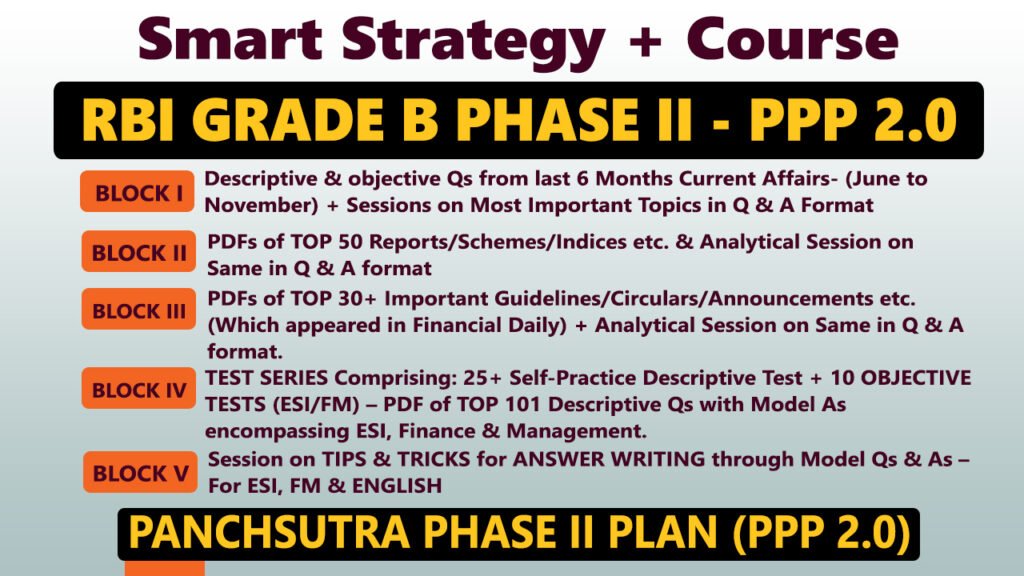Daily Current Affairs Quiz
14 & 15 September, 2025
National Affairs
1. 2nd National Conference of Anti-Narcotics Task Force (ANTF) Heads
Source: PIB
Context:
Union Home Minister Amit Shah will inaugurate the 2nd National Conference of Anti-Narcotics Task Force (ANTF) Heads of States and Union Territories in New Delhi on September 16–17, 2025.
Key Highlights:
- Inauguration: By Union Home Minister Amit Shah.
- Participants: ANTF Heads from all 36 States/UTs + representatives from other government departments.
- Key Releases & Launches:
- NCB Annual Report 2024 (Narcotics Control Bureau).
- Online Drug Disposal Campaign (digital platform for safe & transparent disposal of seized drugs).
- Objective:
- Strategic platform to strengthen coordination against drug trafficking and abuse.
- Reinforce PM Narendra Modi’s vision of a drug-free India.
2. PM Modi Inaugurates India’s First Bamboo-Based Ethanol Plant in Assam
Source: TH
Context:
Prime Minister Narendra Modi inaugurated the country’s first bamboo-based bioethanol plant in Golaghat, Assam, and laid the foundation stone for a ₹7,230-crore polypropylene plant at the Numaligarh Refinery. The initiative is part of India’s broader push for energy self-sufficiency, clean energy, and rural development.
What is a Bamboo-Based Bioethanol Plant?
A bamboo-based bioethanol plant is an industrial facility that converts bamboo into ethanol, a type of biofuel that can be blended with petrol or used as a renewable energy source.
Process:
- Feedstock Collection: Bamboo is harvested and transported to the plant.
- Pretreatment: Bamboo biomass is broken down into simpler components, mainly cellulose, hemicellulose, and lignin.
- Hydrolysis: Cellulose and hemicellulose are converted into fermentable sugars using enzymes or acids.
- Fermentation: Microorganisms (like yeast) ferment the sugars into ethanol.
- Distillation & Purification: Ethanol is separated and purified to make fuel-grade bioethanol.
- By-products: Lignin and other residues can be used for energy production, compost, or industrial applications.
Applications of Ethanol Produced:
- Can be blended with petrol (E5, E10, or higher) for vehicles.
- Used in industrial and chemical processes as a green solvent.
- Potential use in pharmaceutical and cosmetic industries.
3. Purple Fest 2025
Source: PIB
Context:
The Indian Sign Language Research and Training Centre (ISLRTC), in collaboration with Amity University, Noida, organized Purple Fest 2025, a national-level festival focused on the empowerment and inclusion of persons with disabilities (Divyangjan).
Key Highlights:
- Objective:
- Promote inclusion, awareness, and accessibility for persons with disabilities.
- Empower Divyangjan through entrepreneurship, skill-building, cultural participation, and education.
- Celebrate creativity and talent while strengthening capacity through Indian Sign Language (ISL)-focused training.
- Core Activities:
- Art & Craft Exhibition: Showcasing products created by Divyangjan artisans.
- Entrepreneurship Stalls: 22 stalls highlighting businesses led by persons with disabilities.
- Cultural & Sports Events: Encouraging participation, representation, and talent celebration.
- Continuing Rehabilitation Education (CRE): Focused on ISL and professional knowledge sharing.
Banking/Finance
1. India’s Outward Foreign Direct Investment (FDI)
Context:
An analysis of RBI data by The Hindu shows that in 2024-25, nearly 56% of India’s outward foreign direct investment (FDI) was routed through low-tax jurisdictions like Singapore, Mauritius, UAE, the Netherlands, UK, and Switzerland. This raises questions on taxation, regulatory arbitrage, and strategic corporate positioning.
Key Findings from RBI Data:
- Total outward FDI (2024-25): ₹3,488.5 crore.
- Top destinations:
- Singapore – 22.6%
- Mauritius – 10.9%
- UAE – 9.1%
India’s Outward Foreign Direct Investment (OFDI)
India’s Outward Foreign Direct Investment (OFDI) refers to investments made by Indian companies, firms, or residents in foreign countries. Unlike inward FDI, where foreign investors invest in India, OFDI involves Indian entities investing abroad to acquire assets, set up subsidiaries, or participate in joint ventures.
Forms of OFDI:
Indian companies can invest abroad in several ways:
- Greenfield Investment: Establishing a new business unit, subsidiary, or plant in a foreign country.
- Mergers & Acquisitions (M&A): Acquiring or merging with existing foreign companies.
- Joint Ventures: Forming partnerships with foreign firms to share capital, technology, and management.
- Portfolio OFDI: Sometimes, Indian firms invest in foreign financial assets, though this is more regulated under capital flows.
Key Features:
- Long-term commitment: Indian investors acquire significant ownership or control.
- Cross-border: Capital flows from India to other countries.
- Regulated: The Reserve Bank of India (RBI) and the Ministry of Commerce & Industry regulate OFDI through frameworks like the Foreign Exchange Management Act (FEMA), 1999.
Objectives of OFDI:
- Market Access: Entering new consumer markets abroad.
- Resource Access: Acquiring raw materials, technology, or skilled manpower.
- Diversification: Reducing dependency on domestic market or risks.
- Strategic Advantage: Acquiring global brands, intellectual property, or global supply chain integration.
Regulatory Framework in India:
- Automatic Route: No prior approval required if investment is within prescribed limits.
- Government Route: Requires approval for sensitive sectors or higher amounts.
- RBI Guidelines: Investments must comply with FEMA regulations and reporting requirements.
2. Insurance Amendment Bill
Source: BS
Context:
Finance Minister Nirmala Sitharaman has indicated that the Insurance Amendment Bill, which proposes 100% foreign direct investment (FDI) in the sector, is likely to be introduced in the upcoming Winter Session of Parliament.
Key Proposals of the Bill:
- FDI Enhancement:
- Raise the foreign investment limit from the current 74% to 100%.
- Applicable to companies investing the entire premium in India.
- Review and simplify existing guardrails and conditionalities for foreign investment.
- Amendments Across Insurance Laws:
- Insurance Act, 1938: Principal framework for insurance operations in India.
- Life Insurance Corporation Act, 1956: Empower LIC board for operational decisions (branch expansion, recruitment).
- Insurance Regulatory and Development Authority Act, 1999: Align regulatory provisions with the amended FDI policy.
- Other Provisions:
- Reduction in paid-up capital requirements.
- Provision for a composite licence to streamline operations.
Objectives:
- Promote policyholders’ interests and financial security.
- Encourage entry of new players, increasing competition.
- Boost insurance penetration to achieve the goal of ‘Insurance for All by 2047’.
- Enhance ease of doing business and create employment opportunities.
3. UPI-Based Cash Withdrawals to Expand Through Business Correspondents
Source: BS
Context:
The National Payments Corporation of India (NPCI) is planning to extend Unified Payments Interface (UPI)-based cardless cash withdrawals beyond ATMs and limited merchant outlets. This initiative aims to make cash access more convenient and accessible, particularly in underbanked and rural areas.
Business Correspondent (BC)
- A Business Correspondent (BC) is an individual or entity engaged by banks to provide basic banking services in areas where bank branches are not easily accessible.
- BCs act as the bank’s agents, bridging the gap between banks and customers, particularly in rural and semi-urban areas.
Key Highlights:
- Expansion Scope:
- Currently, UPI-driven cash withdrawals are available only at UPI-enabled ATMs and certain merchants (₹1,000 per transaction in urban areas; ₹2,000 in rural areas).
- Plans are underway to extend the facility to over 2 million Business Correspondents (BCs) across India.
- Mechanism:
- Users can scan a QR code at BC outlets with any UPI app to withdraw cash.
- The user’s account is debited and the BC’s account credited in real-time.
- This complements existing modes like biometric Aadhaar-enabled cash withdrawals and micro-ATMs.
- Proposed withdrawals via UPI at BCs could allow up to ₹10,000 per transaction, similar to micro-ATM limits.
4. Sebi Pushes Capital Market Reforms to Enhance Depth and Investor Participation
Source: TOI
Context:
The Securities and Exchange Board of India (Sebi) has implemented a series of structural reforms aimed at broadening market participation, improving transparency, and attracting quality securities into the Indian capital market. The reforms target both primary and secondary markets to make the investment ecosystem more appealing for domestic and institutional investors.
Key Reforms:
- Public Shareholding and Anchor Investors:
- Listed companies now have more time to meet the minimum public shareholding requirement post-IPO.
- The share reserved for anchor investors during IPO listing has been increased, incentivising early participation by large investors.
- Mutual Fund and FII Adjustments:
- Exit load thresholds for mutual funds have been lowered, providing greater flexibility for investors.
- Low-risk Foreign Institutional Investors (FIIs) now face relaxed disclosure requirements, reducing compliance burdens.
- REITs and Institutional Participation:
- Real Estate Investment Trusts (REITs) have been reclassified as equity for mutual fund investments.
- A wider group of institutional investors can now act in a strategic capacity in REITs, enhancing liquidity and market depth.
- Corporate Governance Tweaks:
- Shareholder approvals for related-party transactions will now be based on company turnover, lowering compliance burden for mid-sized and large companies.
Agriculture
1. Corteva Agriscience Launches New Pesticides for Potato and Grapes
Source: TH
Context:
Global agri-science company Corteva Agriscience has launched two new pesticides in India targeting Downy Mildew in grapes and Late Blight in potatoes, two of the most destructive crop diseases affecting farmers’ productivity and income.
Key Highlights:
- Diseases Targeted:
- Downy Mildew (Grapes) – a fungal disease causing leaf damage, reduced photosynthesis, and crop loss.
- Late Blight (Potatoes) – the same pathogen that caused the Irish famine; still a major global threat.
- Technology Used:
- Based on Corteva’s Zorvec technology, known worldwide for effective control of oomycete plant diseases.
- Product: Zorvec Entecta.
- Features of the New Pesticide:
- Fast action: Protected from wash-off within 20 minutes of spraying.
- Consistent protection: Active ingredients provide strong, long-lasting control.
- Crop benefits: Healthier crops, higher yields, and improved quality of produce.
- Company Claim:
- Expected to transform potato and grape cultivation in India by reducing crop losses and boosting farmer profitability.
Implications for Indian Agriculture
- Farmer Benefits: Reduced dependency on repeated spraying, lower crop losses, improved income stability.
- Market Impact: Grapes (important export crop) and potatoes (staple food crop) will see better disease management.
- Agri-Tech Adoption: Example of how advanced agri-chemicals are complementing India’s efforts in crop protection and food security.
Facts To Remember
1. Former Meghalaya CM D.D. Lapang passes away
Former Meghalaya Chief Minister Donwa Dethwelson Lapang passed away at a hospital in Shillong. He was 93.
2. Fiji ant numbers plunged after humans came
Researchers sequenced the DNA of more than 4,000 specimens preserved in museums, representing over 120 species, and found that 79% of Fiji’s endemic ant species are now in decline, with losses starting soon after humans arrived about 3,000 years ago.
3. Minakshi, Jaismine punch gold at Worlds
Minakshi Hooda and Jaismine Lamboria, both aged 24, upset two Paris Olympics medallists and top seeds in their respective weight classes to emerge as champions in the World boxing championships in Liverpool.
4. Meghana clinches bronze medal in air rifle
Meghana Sajjanar clinched bronze in women’s air rifle in the World Cup in Ningbo.
5. Delhi Govt to Launch ‘Seva Pakhwada’ from Sept 17
To mark Prime Minister Narendra Modi’s birthday, the Delhi government will roll out a series of welfare and development initiatives over a 15-day period, called ‘Seva Pakhwada’ (Fortnight of Service).
6. Retail Inflation Inches Up in August, Remains Below RBI Target
Retail inflation, as measured by the Consumer Price Index (CPI), rose marginally to 2.07% in August 2025, up from 1.61% in July, according to the National Statistics Office (NSO). The second-quarter average (July-August) stands at 1.84%, lower than the RBI’s earlier projection of 2.1%. Since February 2025, inflation has remained below the RBI’s 4% target.



















